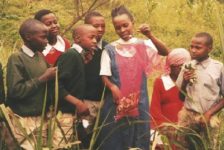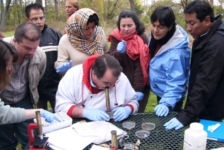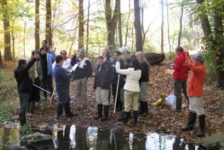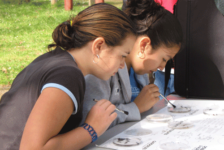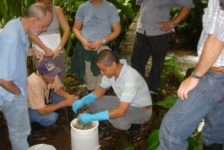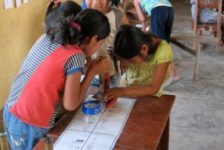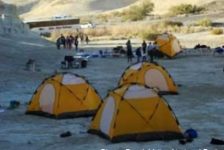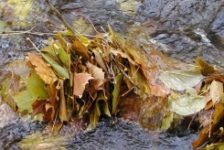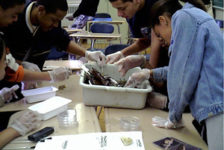In this issue: Peruvian Leaf Pack; Macroinvertebrate Review: Scuds vs. Sowbugs; Changing Lives & Communities in Costa Rica.
“We never know the worth of water till the well runs dry.” Thomas Fuller.
Peruvian Leaf Pack
By Licia Silva Ortiz & Therany Gonzales Ojeda
After receiving Leaf Pack training at the Stroud Water Research Center in October 2008, we brought it back home to Puerto Maldonado, a small city in the southeastern part of the Peruvian Amazon.
The goal of our program was to educate the public about the importance of water as a vital resource and to raise awareness about the need for conservation of the Amazon region.
In February of 2009, we started the Leaf Pack Experiment program in partnership with the ACEER Foundation. We began by organizing several Leaf Pack workshops for teachers and field guides who subsequently participated as environmental volunteers.
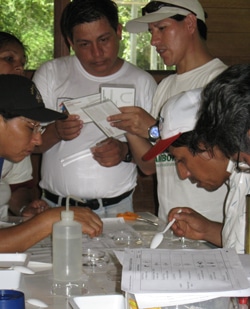
We followed these with a program that consisted of workshops in local classrooms, field experiments, and a presentation by participating students to their entire school.
By the end of the year, 35 teachers and 182 students from six schools had been trained in the program.
In April, we started taking school groups to ACEER’s Tambopata-Inkaterra field site, where students learned about the water cycle, aquatic organisms, the importance of vegetation for aquatic food chains, and water quality.
The students were really interested. Not only did they participate actively in all the phases of the program but some took the exciting extra step of organizing their own workshops.
They participated in school science fairs and were even selected for future competitions at the regional level. Because many people visit the school science fairs, they are a great way to transmit the information to the public and to engage the adults in conservation issues — especially parents who see their children concerned about water quality and teaching others how to protect it.
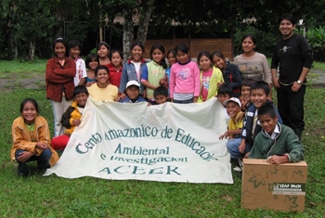
Because of the abundance of freshwater in our region, many people overlook the contamination of our water and the deforestation of the streams and riverbanks. There are still many small streams from which one can drink the water directly, but more are becoming unfit for human consumption every day.
Using the aquatic organisms, children can monitor the water quality in their local streams and compare their results with those of others. In this way, they contribute to conserving fresh water in the Peruvian rainforest, protecting the headwaters that are the sources of that water, and changing the way people think about water use.
In the future, we plan to train more schools and decision-makers in our region — because the protection of our clean, fresh flowing water depends on everyone.
Macroinvertebrate Review: Scuds vs. Sowbugs
A quick review of commonly misidentified macroinvertebrates. This time we look at the differences between scuds and sowbugs, which are often mistaken for each other.
Common Characteristics
- Distinct head
- Prominent pair of antennae
- Jointed legs
- 10 legs or more
How They Differ
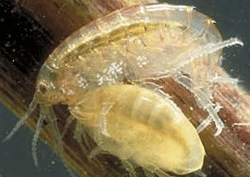
Scuds
- Swim rapidly on their sides — earning them the nickname sideswimmer
- Body is somewhat transparent
- Resembles a shrimp
- Body flattened from side to side
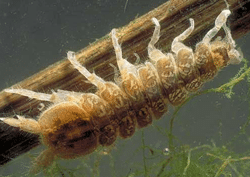
Sowbugs
- Walk slowly
- Color varies from brown to gray, with or without a pattern
- Resembles a roly-poly found terrestrially under potted plants or logs
- Body flattened from top to bottom
Changing Lives & Communities in Costa Rica
By Randall Varela Chaves

Nectandra Institute was founded in 1999 to carry out education, scientific research and community outreach programs that promote the conservation of cloud forests and the stewardship of watershed ecosystems in northern Costa Rica. In October 2008, I represented Nectandra as part of a group of 18 educators, conservation workers and government officials, from Central and South America, who participated in a weeklong Leaf Pack workshop at the Stroud Water Research Center.
When I returned home, I created a water-quality monitoring network composed of women in La Balsa Watershed, which is near Costa Rica’s Central Valley, about 60 kilometers from the capital of San Jose. Twenty women, who live in different communities throughout the watershed, participated in a workshop that covered watershed management, the water cycle, virtual water and our hydrological footprint, the physical, chemical and biological parameters for monitoring water quality, public water policies and environmental legislation in Costa Rica.
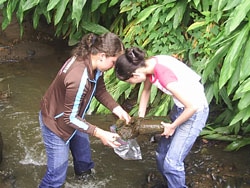
Armed with this knowledge, the group sampled 14 stream locations throughout the watershed in October. We plan to return to the same locations every March and October for the next five years to repeat our testing.
The data we collect will enable us to create an important database to help the local government develop policies for land-use planning. We will also document our analysis and results on posters and make annual presentations to the local communities to promote a new culture of water.
Finally, we plan to increase our sampling locations in the future as we create new monitoring groups in other communities.



